BOTSWANA
BOTSWANA
BOTSWANA
Southern Africa's safari capital
Botswana has secret safari superpowers. It clears cobwebs from overstressed brains and recalibrates souls by humbling them, wrestling egos into submission! All through the sheer magnificence of its wilderness areas and the prolific wildlife species that call them home.
Indeed, Botswana puts the wild into wilderness with no small degree of aplomb, being blessed with some of the most legendary national parks and UNESCO World Heritage Sites in Africa. Chief amongst these is the off-the-charts amazing Okavango Delta, where the waters of the Okavango River empty into the sands of the Kalahari, forming what is perhaps the most breathtakingly beautiful wetland on Planet Earth.
Add legendary destinations like Chobe, the Makgadikgadi Pans, the Central Kalahari, Savute, the Selinda Spillway and the Moremi Game Reserve and you have a country packed with adventure and excitement waiting to be explored.
Botswana is also one of the last remaining homelands of the San Bushmen - Africa's First People - whose ancient way of life as hunter-gatherers offers a fascinating glimpse into the continent's past and a cultural revelation par excellence.
With its wonderful array of safari accommodation from mobile tented safaris and bushcamps that immerse you into the wonders of wild Africa to some of the most renowned luxury camps and lodges on the continent, and everything in between, Botswana is the poster child of exceptional safari experiences. So, you really need to get there, and we'd be delighted to help!
Southern Africa's safari capital
Botswana has secret safari superpowers. It clears cobwebs from overstressed brains and recalibrates souls by humbling them, wrestling egos into submission! All through the sheer magnificence of its wilderness areas and the prolific wildlife species that call them home.
Indeed, Botswana puts the wild into wilderness with no small degree of aplomb, being blessed with some of the most legendary national parks and UNESCO World Heritage Sites in Africa. Chief amongst these is the off-the-charts amazing Okavango Delta, where the waters of the Okavango River empty into the sands of the Kalahari, forming what is perhaps the most breathtakingly beautiful wetland on Planet Earth.
Add legendary destinations like Chobe, the Makgadikgadi Pans, the Central Kalahari, Savute, the Selinda Spillway and the Moremi Game Reserve and you have a country packed with adventure and excitement waiting to be explored.
Botswana is also one of the last remaining homelands of the San Bushmen - Africa's First People - whose ancient way of life as hunter-gatherers offers a fascinating glimpse into the continent's past and a cultural revelation par excellence.
With its wonderful array of safari accommodation from mobile tented safaris and bushcamps that immerse you into the wonders of wild Africa to some of the most renowned luxury camps and lodges on the continent, and everything in between, Botswana is the poster child of exceptional safari experiences. So, you really need to get there, and we'd be delighted to help!
BOTSWANA IN A NUTSHELL
The where...
Here are some of the must-visit places we recommend including on a Botswana safari that can easily be combined with one another as well as a range of other complementary destinations...
BOTSWANA IN A NUTSHELL
The where...
Here are some of the must-visit places we recommend including on a Botswana safari that can easily be combined with one another as well as a range of other complementary destinations...
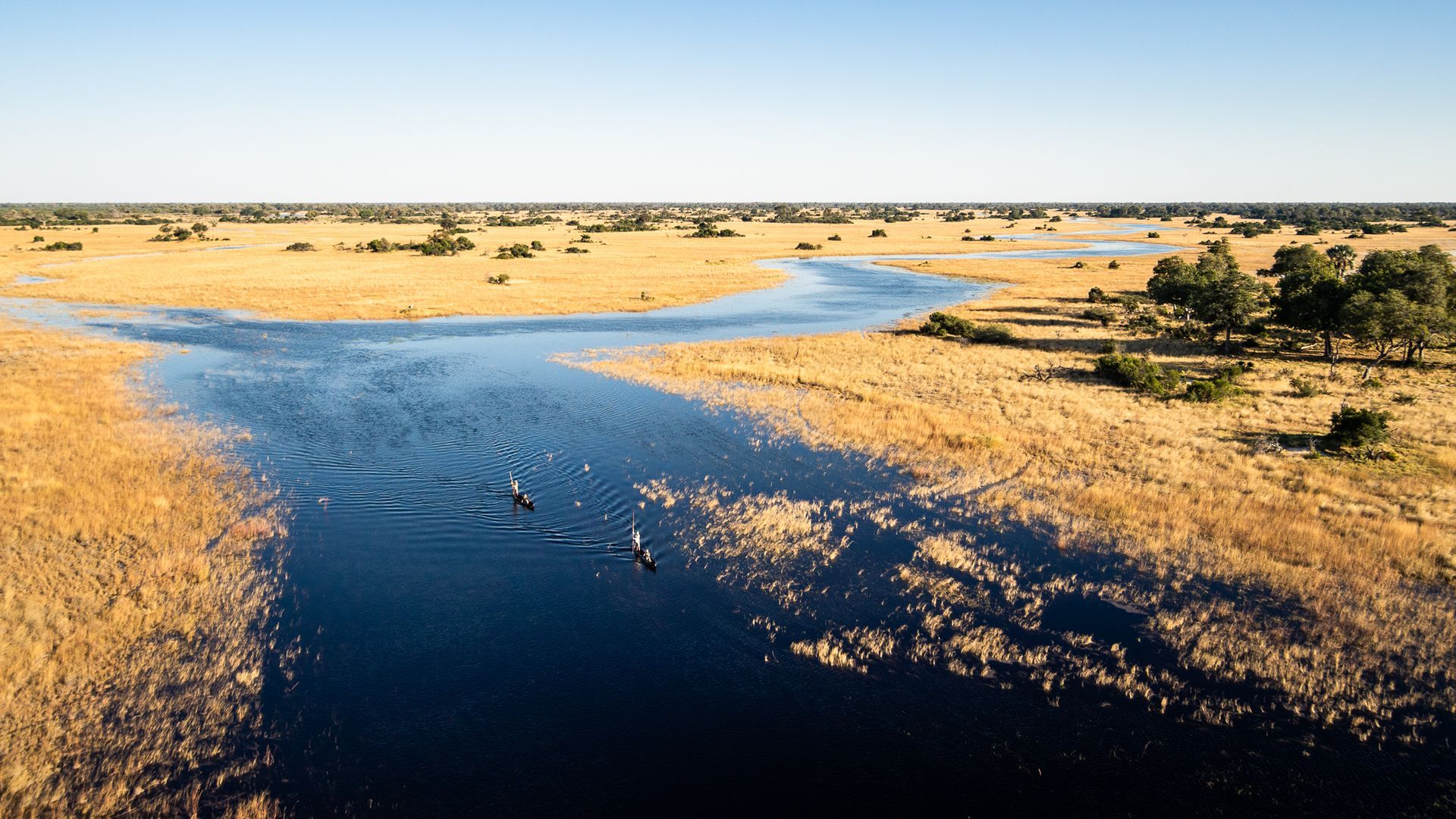
The Okavango Delta
Without a doubt one of the absolute legends of African safari destinations, this UNESCO World Heritage Site is a natural phenomenon in every sense of the word. The world's largest inland alluvial fan delta is a fascinating anomaly that provides life-giving water in the height of the winter dry season. This is thanks to its annual inundation that sees it double in size thanks to heavy rains at its source in the Angolan Highlands. These waters flood south, stopping just north of Maun - the access point for everything Okavango. At this time the Delta becomes a magnet for what feels like all of Botswana's wildlife and is literally teeming with life.
Musts: Mokoro rides along the Delta's channels; boat-based safaris through endless lagoon systems; walking safaris on countless islands; helicopter flights; birding
The Okavango Delta
Without a doubt one of the absolute legends of African safari destinations, this UNESCO World Heritage Site is a natural phenomenon in every sense of the word. The world's largest inland alluvial fan delta is a fascinating anomaly that provides life-giving water in the height of the winter dry season. This is thanks to its annual inundation that sees it double in size thanks to heavy rains at its source in the Angolan Highlands. These waters flood south, stopping just north of Maun - the access point for everything Okavango. At this time the Delta becomes a magnet for what feels like all of Botswana's wildlife and is literally teeming with life.
Musts: Mokoro rides along the Delta's channels; boat-based safaris through endless lagoon systems; walking safaris on countless islands; helicopter flights; birding.
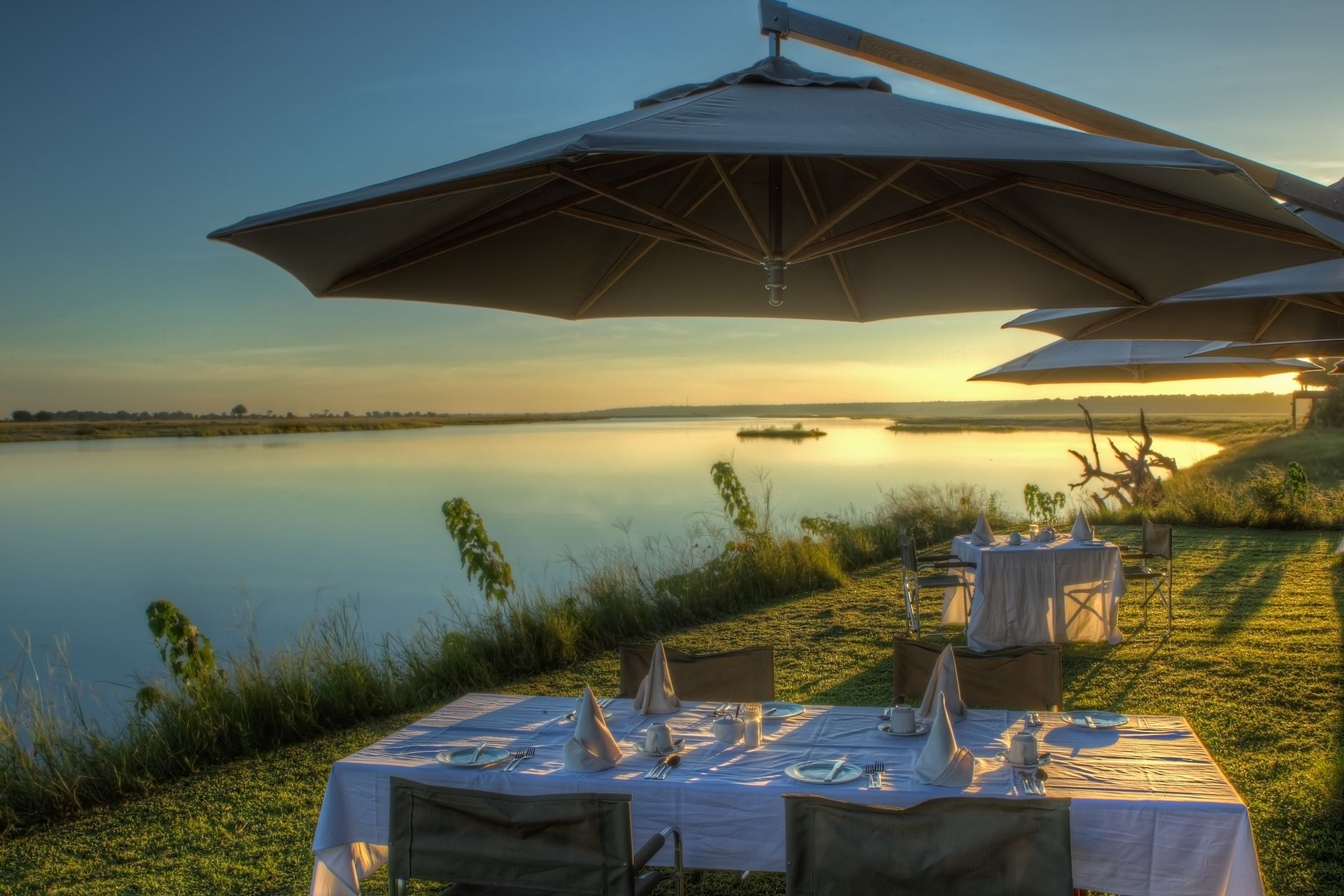
Chobe National Park
This vast wilderness in the north-east of Botswana is named after the permanent river that forms a natural border with neighbouring Namibia before meeting the mighty Zambezi River close to the town of Kasane. Synonymous with huge herds of elephant and buffalo, Chobe is also renowned for its predators and exceptional birding, with a cornucopia of life found along the river and inland in its woodland thickets and vast savannah floodplains. The Chobe River itself is where you'll find luxurious houseboats that cruise the waters in style and a range of exceptional lodges offering river-based safari experiences.
Musts: Sundowner cruises along the river; visits to yellow-billed stork roosts and nurseries; boat-based safaris through the Chobe rapids; cruising the various islands in the middle of the river; fishing for tiger fish and bream
Chobe National Park
This vast wilderness in the north-east of Botswana is named after the permanent river that forms a natural border with neighbouring Namibia before meeting the mighty Zambezi River close to the town of Kasane. Synonymous with huge herds of elephant and buffalo, Chobe is also renowned for its predators and exceptional birding, with a cornucopia of life found along the river and inland in its woodland thickets and vast savannah floodplains. The Chobe River itself is where you'll find luxurious houseboats that cruise the waters in style and a range of exceptional lodges offering river-based safari experiences.
Musts: Sundowner cruises along the river; visits to yellow-billed stork roosts and nurseries; boat-based safaris through the Chobe rapids; cruising the various islands in the middle of the river; fishing for tiger fish and bream.
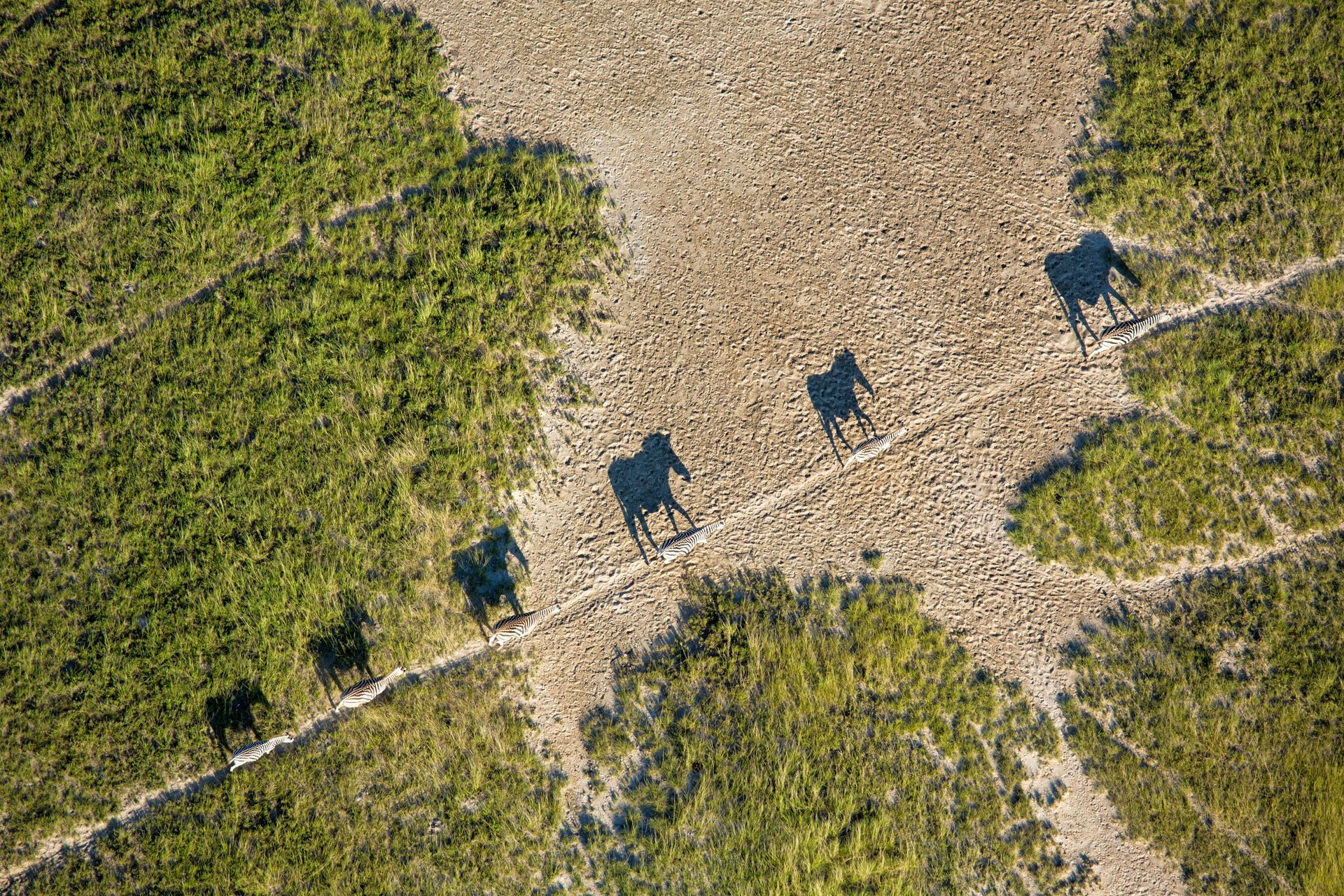
Makgadikgadi Pans
The remains of an ancient lake that once covered 80,000km2, the vast expanses of the Makgadikgadi are today one of the most spectacular sights in Africa. Made up of a series of huge salt pans, the largest of which are the Sua, Nwetwe and Nxai pans, during the rainy season this region transforms into a lush wetland filled with nutritious grasses that make it the destination of Africa's longest zebra migration, along with wildebeest, elephants, and other large herbivores, as well as the predators that prey on them. At this time of year, it's also a birder's paradise and Sua Pan is an important flamingo breeding site. In the winter you can sleep out on the pans and explore on quadbikes and horses. The pans are dotted with rocky outcrops like Kubu Island, famous for its large baobabs.
Musts: Sleepout on the pans (winter); quadbike safaris (winter); horse safaris; explore Kubu Island; see Baines' Baobab; birding; photography; game viewing
Makgadikgadi Pans
The remains of an ancient lake that once covered 80,000km2, the vast expanses of the Makgadikgadi are today one of the most spectacular sights in Africa. Made up of a series of huge salt pans, the largest of which are the Sua, Nwetwe and Nxai pans, during the rainy season this region transforms into a lush wetland filled with nutritious grasses that make it the destination of Africa's longest zebra migration, along with wildebeest, elephants, and other large herbivores, as well as the predators that prey on them. At this time of year, it's also a birder's paradise and Sua Pan is an important flamingo breeding site. In the winter you can sleep out on the pans and explore on quadbikes and horses. The pans are dotted with rocky outcrops like Kubu Island, famous for its large baobabs.
Musts: Sleepout on the pans (winter); quadbike safaris (winter); horse safaris; explore Kubu Island; see Baines' Baobab; birding; photography; game viewing.
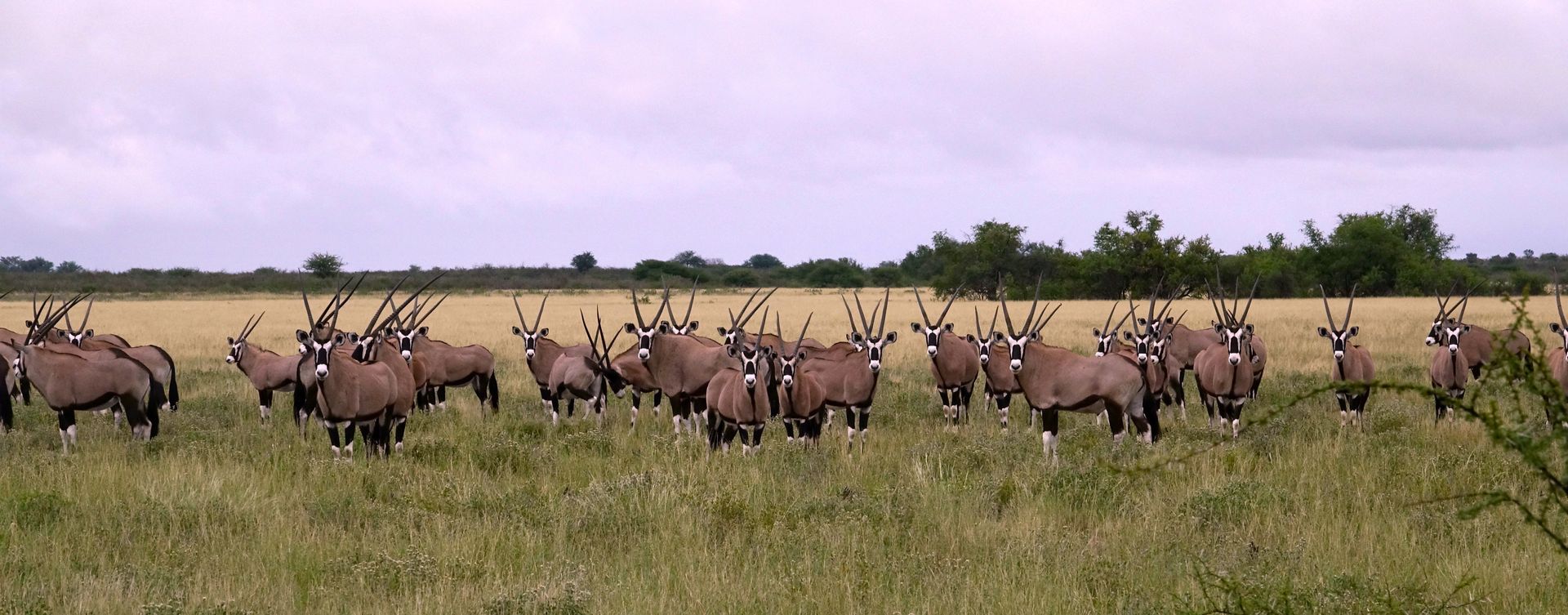
The Central Kalahari
Covering 70% of Botswana, the ancient Kalahari Desert is unbelievably beautiful and truly vast. The Central Kalahari Game Reserve is wild and mysterious, with horizons that seem to stretch without end filled with waist-high golden grasses that are punctuated by the odd tree and bush. Covering 52,800km2, the Central Kalahari redefines the meaning of remote and is the second largest wildlife reserve in the world. Home to unique desert-adapted species, the summer rains see the grasslands in the north teem with wildlife, with huge herds of springbok, gemsbok, wildebeest and eland common. Giraffe are also found here, as are the usual itinerant predators that feed on plains game. The Central Kalahari is also a sanctuary for the San Bushmen, providing them with space to follow their traditional way of life.
Musts: Walking safaris; sleepouts under incredible starlit skies; San Bushmen cultural experiences; game drives; night drives
The Central Kalahari
Covering 70% of Botswana, the ancient Kalahari Desert is unbelievably beautiful and truly vast. The Central Kalahari Game Reserve is wild and mysterious, with horizons that seem to stretch without end filled with waist-high golden grasses that are punctuated by the odd tree and bush. Covering 52,800km2, the Central Kalahari redefines the meaning of remote and is the second largest wildlife reserve in the world. Home to unique desert-adapted species, the summer rains see the grasslands in the north teem with wildlife, with huge herds of springbok, gemsbok, wildebeest and eland common. Giraffe are also found here, as are the usual itinerant predators that feed on plains game. The Central Kalahari is also a sanctuary for the San Bushmen, providing them with space to follow their traditional way of life.
Musts: Walking safaris; sleepouts under incredible starlit skies; San Bushmen cultural experiences; game drives; night drives.
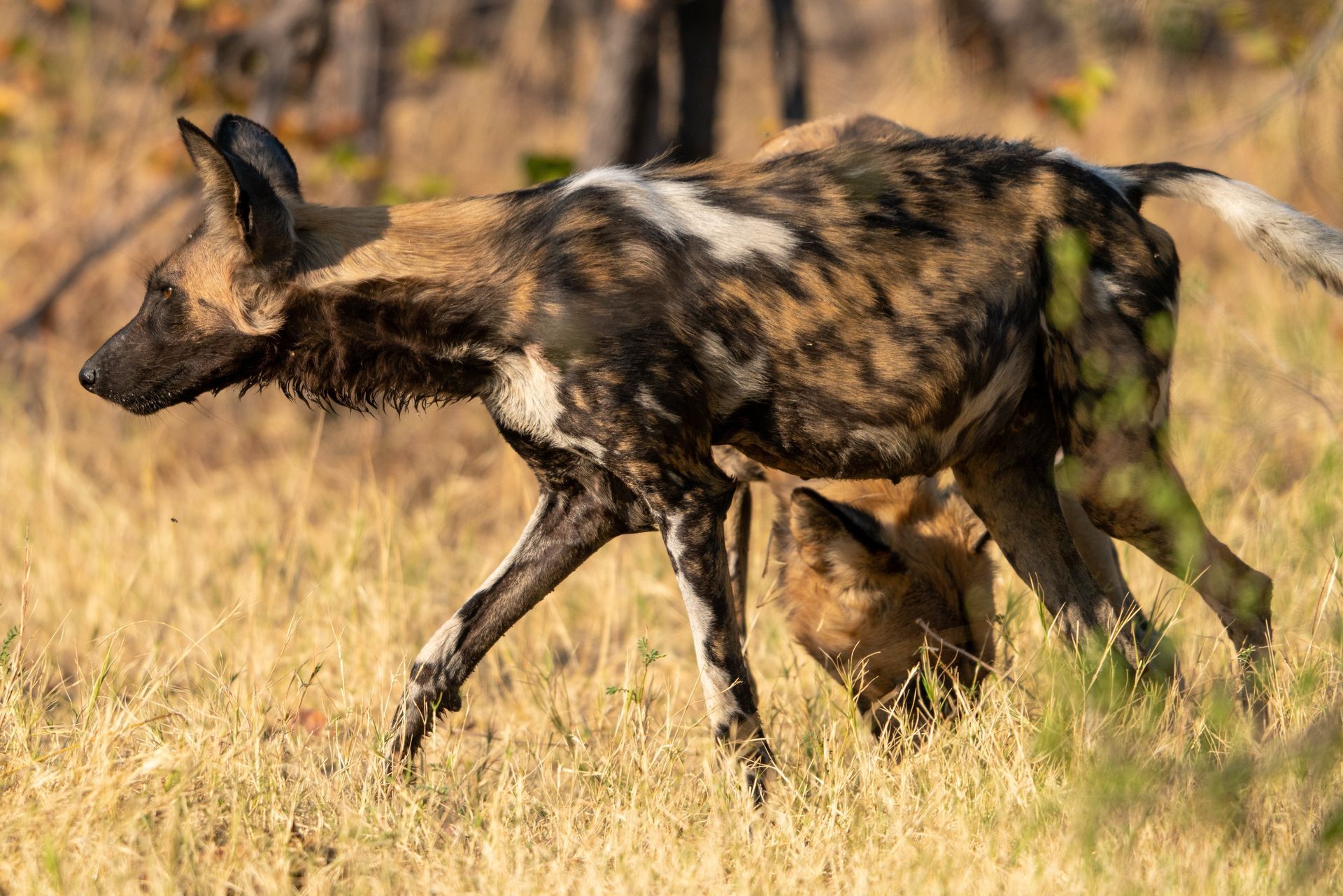
Northern Botswana
The far northern reaches of Botswana, around the panhandle of the Okavango Delta and along the Kwando River and its many iterations, are among the most wildlife-rich and stunningly beautiful in the country. This is the home of the legendary Selinda Spillway, Linyanti and Savute marshes and more wildlife than you can shake a stick at! Renowned for its resident predators - lion, leopard, cheetah, caracal, serval and packs of African wild dogs - not to mention hundreds of elephant and buffalo, the year-round animal action here is phenomenal. With the presence of permanent water you can also do boat-based safari activities like canoeing along the Selinda Spillway or fishing the various lagoons. The sunsets are epic, the lodges and camps wonderfully authentic and remote and the safari experiences are just fabulous.
Musts: Walking safaris; helicopter flights; canoeing the Selinda Spillway; fishing the lagoons; birding along the Kwando River; picnics overlooking waterholes; mokoro safaris (waterlevels permitting)
Northern Botswana
The far northern reaches of Botswana, around the panhandle of the Okavango Delta and along the Kwando River and its many iterations, are among the most wildlife-rich and stunningly beautiful in the country. This is the home of the legendary Selinda Spillway, Linyanti and Savute marshes and more wildlife than you can shake a stick at! Renowned for its resident predators - lion, leopard, cheetah, caracal, serval and packs of African wild dogs - not to mention hundreds of elephant and buffalo, the year-round animal action here is phenomenal. With the presence of permanent water you can also do boat-based safari activities like canoeing along the Selinda Spillway or fishing the various lagoons. The sunsets are epic, the lodges and camps wonderfully authentic and remote and the safari experiences are just fabulous.
Musts: Walking safaris; helicopter flights; canoeing the Selinda Spillway; fishing the lagoons; birding along the Kwando River; mokoro safaris (waterlevels permitting); picnics overlooking waterholes.
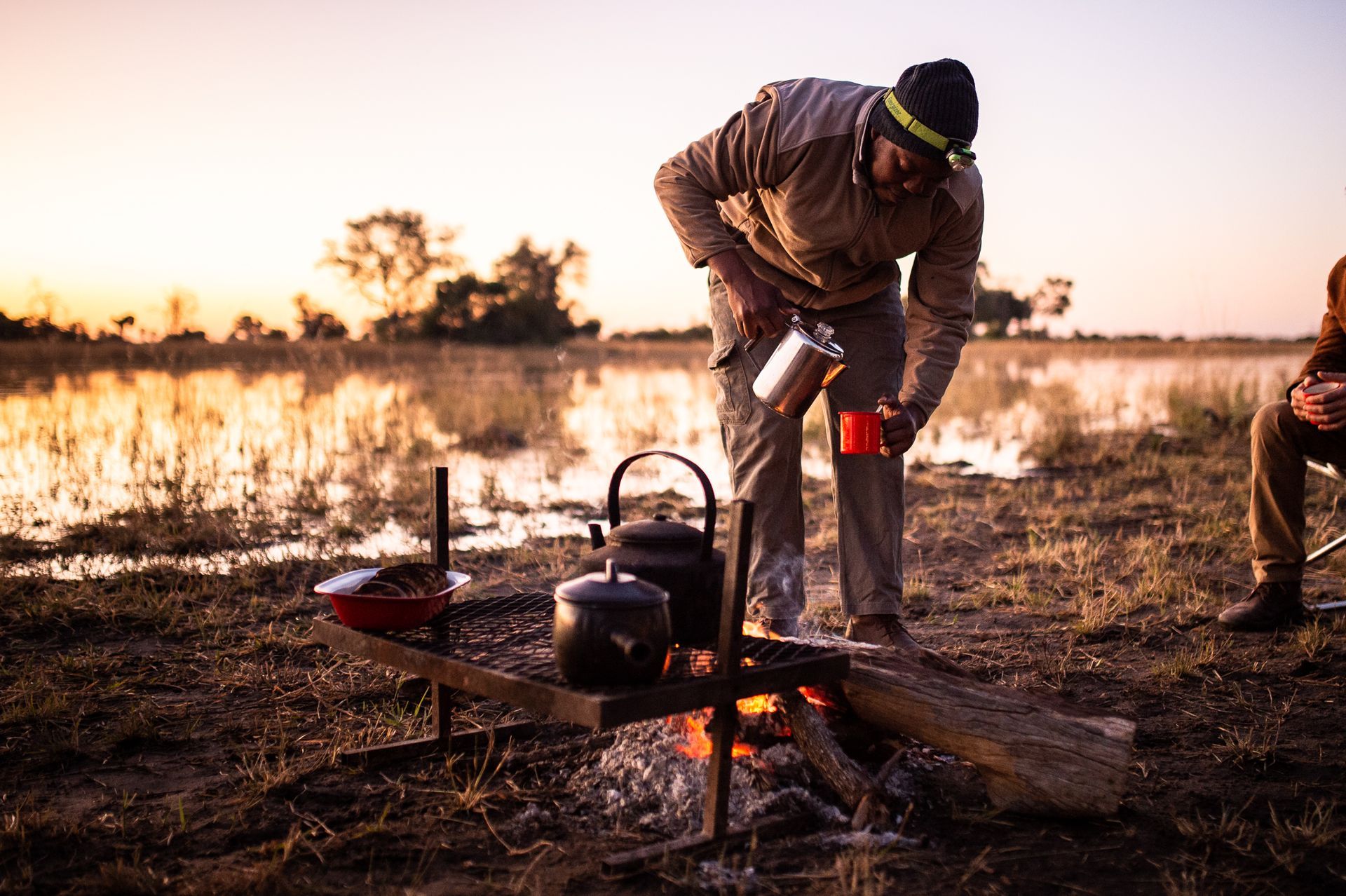
The when...
January, February, March? Befuddled brain bothering you? Try this easy breakdown of the seasons in Botswana with some recommendations on the best times to visit and why. We hope it does the trick!
-
Spring
When: September to November.
What to expect: Lovely warm days, cooler evenings building up to the start of the rains. Can get very hot in November before the first rains fall.
Why visit: Spring heralds the end of the long, dry season and holds the promise of rain, but in the Okavango Delta, it signals the end of the inundation, when flood waters begin to recede and the seasonal floodplains dry out, which means animals gravitate towards remaining lagoons and channels. It's a great time for game viewing.
-
Summer
When: December to February.
What to expect: Very warm to hot days, warm evenings and spectacular thunderstorms.
Why visit: This is the emerald season when the African wilderness is green, green, green and new life is everywhere as many animals have their young during this time of plenty. The skies are filled with colourful birds in dazzling breeding plumage and living is easy. There are wildflowers everywhere and bees go into overdrive, producing incredible honey. It's also the rainy season when downpours can be expected, and humidity levels rise.
-
Autumn
When: March to May.
What to expect: Lovely warm days and cooler evenings.
Why visit: You get the tail end of the summer greenery with the benefit of cooler temperatures and still have the chance to see some late baby animals. The humidity of summer dissipates, and the climate is perfect for activities like hiking, cycling, horseriding, walking safaris and game viewing. In the Okavango this is when the second round of drying out occurs, reaching its zenith before the annual inundation begins.
-
Winter
When: June to August.
What to expect: Cold mornings and nights, warm days.
Why visit: Outside of the Okavango Delta, this is the dry season when the bush thins out completely and wildlife stays close to water, making it the peak season for game viewing, especially where predator action is concerned. While you will need warm clothes for mornings and evenings, the days are sunny and warm with average daytime temperatures in the low to mid 20 degrees C. In the Delta the annual inundation arrives, peaking in August, turning the Delta into a lush wetland that's teeming with life.

ABOUT US
For Sian Bester and Cara Lloyd, Zafaris is the result of years spent working at the coalface of the safari industry, learning their trade and perfecting it.
Zafaris isn't a regular travel company thanks to the fact that Sian and Cara don't just know their safari onions, they can also prepare and dish those onions up in a delectable and irresistible manner! Both have worked in lodges and have experience in the "how" of the art of safari at a practical level. They've also done their time working in large, corporate operators, sweating over the minutiae of countless itineraries.
Zafaris is the culmination of this experience - a boutique safari operator that's all about personal, professional service, expert recommendations and first-hand experience of the very best that Africa has to offer...
Zafaris is represented on
SafariBookings.
The when...
January, February, March? Befuddled brain bothering you? Try this easy breakdown of the seasons in Botswana with some recommendations on the best times to visit and why. We hope it does the trick!
-
Spring
When: September to November.
What to expect: Lovely warm days, cooler evenings building up to the start of the rains. Can get very hot in November before the first rains fall.
Why visit: Spring heralds the end of the long, dry season and holds the promise of rain, but in the Okavango Delta, it signals the end of the inundation, when flood waters begin to recede and the seasonal floodplains dry out, which means animals gravitate towards remaining lagoons and channels. It's a great time for game viewing.
-
Summer
When: December to February.
What to expect: Very warm to hot days, warm evenings and spectacular thunderstorms.
Why visit: This is the emerald season when the African wilderness is green, green, green and new life is everywhere as many animals have their young during this time of plenty. The skies are filled with colourful birds in dazzling breeding plumage and living is easy. There are wildflowers everywhere and bees go into overdrive, producing incredible honey. It's also the rainy season when downpours can be expected, and humidity levels rise.
-
Autumn
When: March to May.
What to expect: Lovely warm days and cooler evenings.
Why visit: You get the tail end of the summer greenery with the benefit of cooler temperatures and still have the chance to see some late baby animals. The humidity of summer dissipates, and the climate is perfect for activities like hiking, cycling, horseriding, walking safaris and game viewing. In the Okavango this is when the second round of drying out occurs, reaching its zenith before the annual inundation begins.
-
Winter
When: June to August.
What to expect: Cold mornings and nights, warm days.
Why visit: Outside of the Okavango Delta, this is the dry season when the bush thins out completely and wildlife stays close to water, making it the peak season for game viewing, especially where predator action is concerned. While you will need warm clothes for mornings and evenings, the days are sunny and warm with average daytime temperatures in the low to mid 20 degrees C. In the Delta the annual inundation arrives, peaking in August, turning the Delta into a lush wetland that's teeming with life.
CONTACT US
Contact Us
We will get back to you as soon as possible.
Please try again later.
Contact Us
We will get back to you as soon as possible.
Please try again later.
CONTACT US
Contact Us
We will get back to you as soon as possible.
Please try again later.
Contact Us
We will get back to you as soon as possible.
Please try again later.
CONTACT US
Contact Us
We will get back to you as soon as possible.
Please try again later.
All Rights Reserved | Elgin Travel (Pty) Ltd, t/a Wildr.Africa
Designed & powered by: The Safari Collective
Designed & powered by: The Safari Collective
All Rights Reserved | Elgin Travel (Pty) Ltd, t/a Wildr.Africa
All Rights Reserved | Elgin Travel (Pty) Ltd, t/a Wildr.Africa
Designed & powered by:

